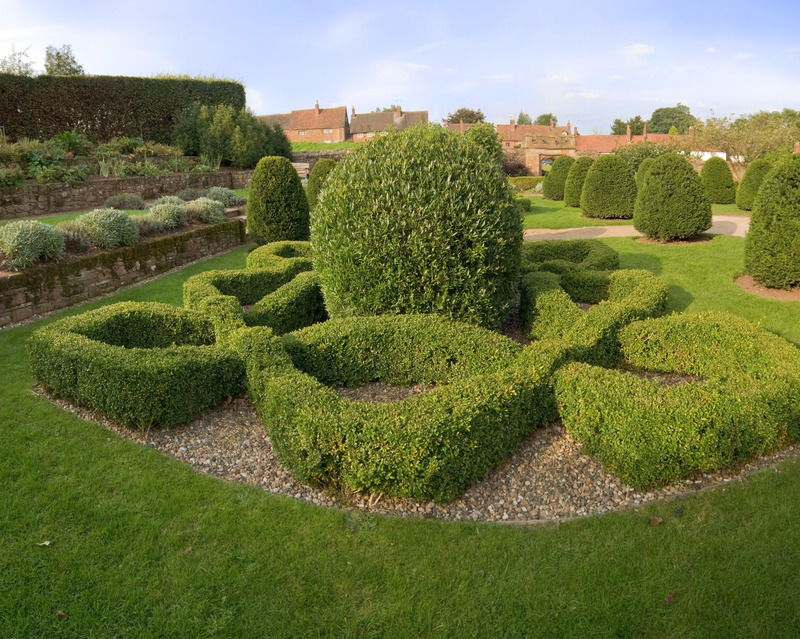Steps to Building a Kid-Safe Outdoor Space
Posted on 21/06/2025
Steps to Building a Kid-Safe Outdoor Space
Creating a kid-safe outdoor space is an essential aspect of providing children with a fun, engaging, and secure environment to flourish. With a growing emphasis on outdoor play and development, ensuring that your backyard or garden remains free of hazards is more crucial than ever. In this comprehensive guide, we'll share step-by-step strategies and expert tips for building a safe outdoor area for kids--from planning to maintenance--so you and your family can embrace the best of outdoor living without worries.

Why Invest in a Child Safe Outdoor Area?
The benefits of a child-safe outdoor area go beyond merely offering a playground; they encompass physical, emotional, and developmental gains. Outdoor play is linked to improved sensory skills, creativity, and social interactions. Taking measures to secure your outdoor environment will also provide you peace of mind, allowing your children the freedom to explore while minimizing risks.
- Encourages physical activity: Safe outdoor spaces promote exercise away from digital screens.
- Boosts creativity: Secure play areas allow imaginative play without constraints.
- Enhances learning: Nature-based play encourages curiosity and learning.
- Prevents injuries: Thoughtful design and maintenance prevent accidents and injuries.
Effective Steps to Make Your Outdoor Space Kid-Safe
Transforming your outdoor area into a safe play space for children doesn't have to be overwhelming. Follow these step-by-step guidelines to cultivate a secure environment tailored for your family's unique needs.
1. Assess and Plan Your Outdoor Area
Every kid-friendly backyard starts with a thorough assessment and detailed plan. Consider the following when evaluating your space:
- Identify hazards: Look for uneven ground, sharp edges, poisonous plants, exposed wires, unlocked sheds, and water features.
- Map out zones: Designate areas for different activities like active play, creative play, and relaxation.
- Think of supervision: Position play zones within sightlines of main windows or vantage points for easy monitoring.
- Account for age and abilities: Adapt the environment to suit the developmental stages and needs of your children.
2. Choose Safe Surfaces for Play
The selection of safe surfaces is paramount in preventing injuries from falls, which are among the most common backyard mishaps.
- Grass: Offers a soft landing but can become slippery when wet--ensure even grading and regular maintenance.
- Mulch or Wood Chips: Great for under playsets; effective shock absorbers, but choose soft, splinter-free varieties.
- Rubber Mats and Tiles: These provide exceptional cushioning and are popular in professional playgrounds; ensure non-toxic materials.
- Avoid concrete, gravel, and hard paving: These surfaces increase injury risk and should not be used under climbing equipment or swings.
3. Add Fencing and Barriers
A crucial element in any safe outdoor play area for children is secure boundaries. Fencing not only keeps your children in but keeps unwanted animals and intruders out.
- Install sturdy fencing around pools, gardens, and perimeters.
- Ensure a minimum height of 4 feet to deter climbing.
- Choose materials with no sharp edges or gaps wider than 4 inches.
- Use gates with childproof locks and check regularly for wear or damage.
- Add visual barriers such as plant hedges to enhance privacy and aesthetics.
4. Select Age-Appropriate and Safe Play Equipment
One of the highlights of a child-friendly outdoor space is play equipment. However, poorly chosen or installed equipment poses severe risks.
- Opt for reputable brands certified to ASTM, CPSC, or EN safety standards.
- Install playsets on level ground and anchor them securely to prevent tipping.
- Check for pinch points and sharp edges. Ensure all moving parts are covered and hardware is capped.
- Match equipment to your child's age and developmental level. Supervise toddlers on swings, slides, and climbing walls until they demonstrate proficiency.
- Follow installation guides thoroughly, and perform monthly checks for damage, rust, or breaks.
5. Remove Toxic Plants and Chemicals
An often overlooked but critical step for a kid-safe backyard is eliminating exposure to poisonous plants and hazardous chemicals.
- Know your plants: Remove or secure plants like oleander, foxglove, jasmine, lily of the valley, and certain mushrooms.
- Secure all garden chemicals, pesticides, and fertilizers in locked sheds out of reach.
- Switch to child-friendly, organic gardening options whenever possible to limit toxic exposure.
- Routinely check for wasp nests, berries, or new unwanted vegetation.
6. Ensure Water Safety
If your kid-safe garden space has water features--be it a pond, a pool, or even buckets--take extra precautions to prevent drowning and accidents.
- Install pool fences that comply with local regulations, with self-latching gates.
- Empty wading pools and buckets after every use.
- Cover ponds, birdbaths, and rain barrels when not supervised.
- Supervise children near any water: Never leave toddlers unattended near pools or water features.
7. Implement Sun and Shade Protections
Young children are highly susceptible to sunburn and heatstroke. Outfitting your kid-friendly garden or safe backyard play area with proper shade ensures both comfort and health.
- Add structures like pergolas, gazebos, or retractable awnings for reliable shade that grows with your children.
- Plant shade trees if space permits but ensure branches do not overhang play equipment.
- Use UV-resistant canopies or oversized umbrellas in flexible play areas.
- Encourage protective clothing, hats, and sunscreen during outside time.
8. Store Tools and Hazardous Materials Safely
Backyards often double as storage for tools, chemicals, and equipment. Storing these items properly is vital for maintaining a child-safe outdoor environment.
- Keep garden tools locked away in a shed or toolbox secured with childproof locks.
- Do not leave power tools unattended, even briefly, especially lawnmowers, trimmers, and sharp garden tools.
- Lock up grills, fire pits, and lighter fluids after each use.
- Avoid storing breakable or hazardous items at ground level in play zones.
9. Establish Play Rules and Boundaries
While physical safety measures are essential, establishing clear guidelines teaches your children how to navigate outdoor play responsibly.
- Set visual boundaries using signs, paint, or plants and educate your children about areas that are out of bounds.
- Establish rules for using equipment and playing near water or fences.
- Teach children to keep outdoor areas tidy and pick up toys, to reduce tripping hazards.
- Explain the risks of running with sticks, throwing stones, or eating plants and berries.
10. Prioritize Regular Maintenance and Inspections
Transforming your yard into a child-safe outdoor play space isn't a one-time job. Consistent maintenance helps you spot new dangers, fix wear and tear, and adapt as children grow.
- Inspect play equipment monthly for rust, loose bolts, and damaged parts.
- Maintain soft surfaces--replenish mulch, fill holes, and mow grass.
- Review fences, gates, and locks to ensure they remain secure.
- Clear away debris, sharp branches, and check for insects like bees or wasps.
Additional Tips for an Engaging and Safe Kids' Outdoor Space
Creating a safe and stimulating backyard for children requires blending safety with excitement. Here are more ideas to enrich your outdoor play zone:
- Incorporate sensory play with water tables, sand pits, or music walls, ensuring each element is designed with safety in mind.
- Add quiet corners with beanbags or hammocks for rest and reading.
- Use non-toxic landscaping for edible gardens or herb planters, allowing children supervised hands-on garden experiences.
- Build natural features like small hills, logs, and stepping stones to encourage balance and exploration.
- Encourage wildlife-watching with safe bird feeders and bug hotels--teach children about local species and safe observation.

Common Mistakes to Avoid When Creating a Kid-Friendly Outdoor Area
Avoiding certain pitfalls is as important as implementing the right steps for a child-safe backyard.
- Using unsafe pressure-treated wood which can leach toxins.
- Overlooking supervision needs--always keep areas visible from the home.
- Ignoring age-appropriate play features--what's safe for a ten-year-old can endanger a toddler.
- Letting clutter accumulate in play areas; keep it minimal and organized.
- Neglecting regular checks--weather and time cause changes you may not notice daily.
Conclusion: The Joy of a Safe and Creative Outdoor Space for Kids
The process of building a kid-safe outdoor space is an investment in your children's health, happiness, and exploration. By following these steps for a secure and fun play zone, you enable children to develop independence and confidence while maintaining safety.
- Assess and plan thoughtfully
- Install the right surfaces and barriers
- Monitor, maintain, and adapt your space as your children grow
With proactive design, vigilant maintenance, and a blend of safety and creativity, your backyard will become a treasured extension of your home--a safe haven for children to laugh, play, and thrive. For more inspiration on kid-friendly yard designs, check out reputable sources or consult landscape professionals specializing in child-safe outdoor environments.

